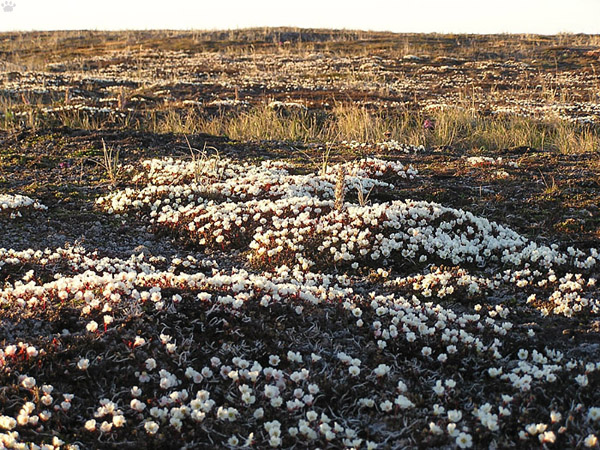
Blooming diapensia (Diapensia lapponica ssp. obovata), Belyaka Spit, Chukotka, Russia. |
Chukotka, part 3: Coastal spits
Long, narrow coastal spits (kosa in Russian) are a common feature of Chukotka coasts. Some have formed near river mouths from alluvial sediment, others separate large, shallow bays (locally called guba) from the sea. Flat, windy, cold places, they seem inhospitable to humans, but most of them are local biodiversity hotspots. It's not a coincidence that many active and abandoned native villages are on spits.

Small spit near the mouth of Ioanna River, Chukotka. |
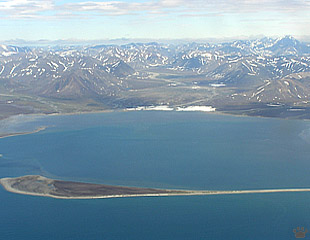
A coastal spit in Cross Bay. |
Spits along the northern coast are mostly gravel, while the southern ones are sandy. |
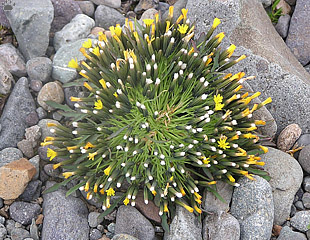
Dwarf hawksbeard (Crepis nana), Belyaka Spit. |
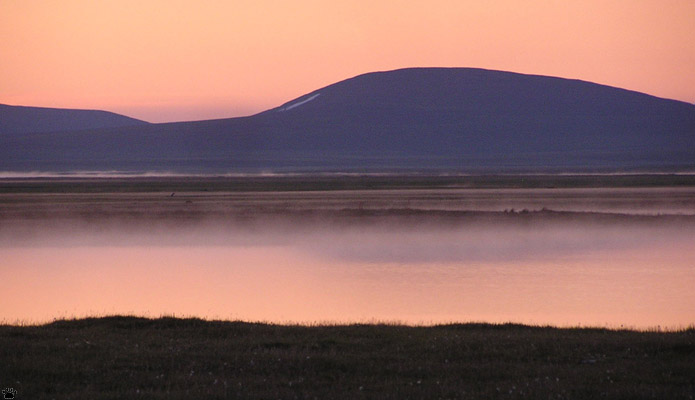
Summer night at Russkaya Koshka Spit, Chukotka. |
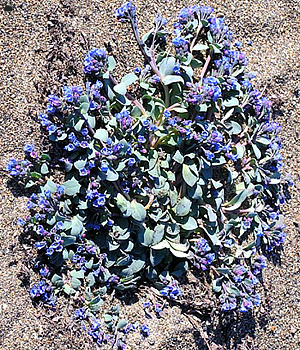
Oysterleaf (Mertensia maritima), Russkaya Koshka Spit. |
Despite being geologically very young and unstable, and having poor soils, spits can have a lot of beautiful flowers in summer. They look their best at night, when the sun is just above the horizon. |
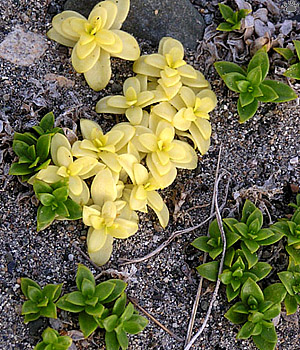
Arctic sandplant (Honckenya oblongifolia), Belyaka Spit. |
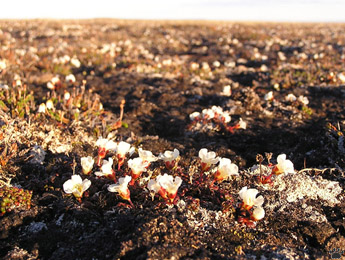
Blooming diapensia, Belyaka Spit. |
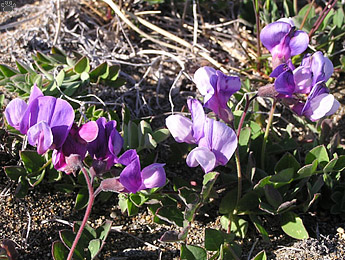
Beach pea (Lathyrus maritimus), Russkaya Koshka Spit. |
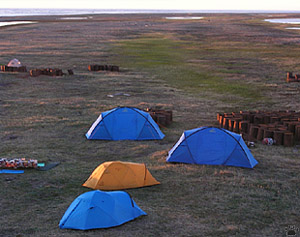
Ornithologists' camp, Belyaka Spit. |
Coastal spits are popular among ornithologists because of their impressive bird diversity. Many bird species are difficult to find elsewhere. |
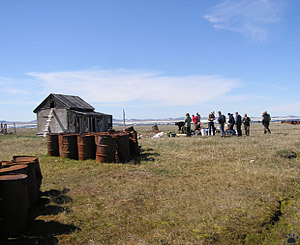
Ornithologists' camp, Belyaka Spit. |

Tundra of Belyaka Spit. |

Snow bunting (Plectrophenax nivalis), Belyaka Spit. |
One kind of birds that is rare on coastal spits is songbirds. Normally you see only 5-6 species around. The most common one is snow bunting, an ubiquitous resident of almost all Arctic habitats, from mountaintops to cities. It is the only bird to make use of huge piles of rusty diesel fuel barrels that litter all Russian Arctic, and can be found even in most remote places. Decades of Soviet occupation have left deep mark on the environment. |
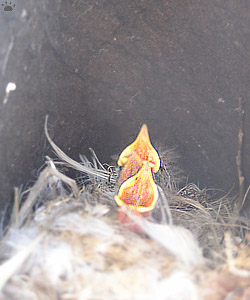
Nest of yellow wagtail (Motacilla flava), Etelkuyum Spit. |

Nest of snow bunting, Belyaka Spit. |
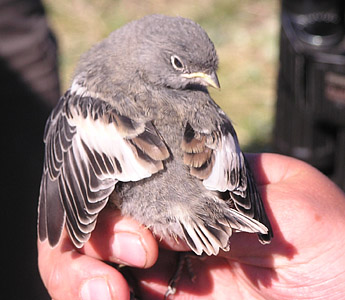
Snow bunting hatchling, Belyaka Spit. |
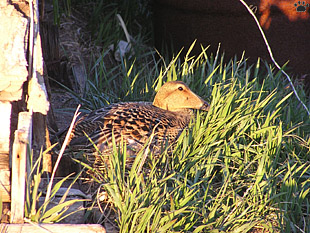
Pacific eider (Somateria molissima v-nigrum) on nest, Belyaka Spit. |
Thousands of geese and ducks nest on spits. Eiders often use man-made structures to shelter their nests. |
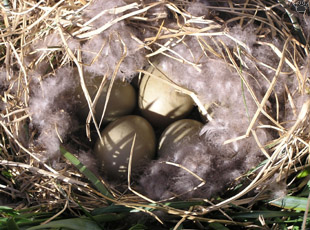
Nest of Pacific eider, Belyaka Spit. |

Spectacled and king eiders (S. fischeri,
S. spectabilis), Cape Schmidt. |
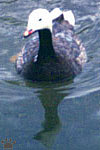
Emperor goose (Anser
canagicus), Uelen. |
nn |
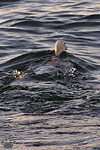
Molting Emperor goose,
Belyaka Spit. |
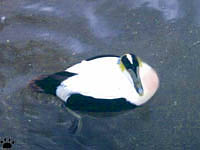
Pacific eider,
Cape Dezhnev. |
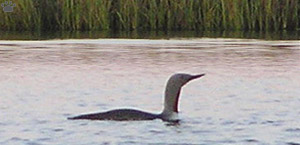
Red-throated loon (Gavia stellata), Belyaka Spit. |
The calls of Chukotka's four loon species are among the most beautiful sounds of the tundra. |

Yellow-billed loons (G. adamsii), Belyaka Spit. |
 |
 |
| Pacific loons (G. pacifica), Belyaka Spit. |
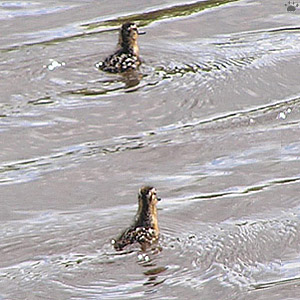
Chicks of red-necked phalarope (Phalaropus lobatus), Belyaka Spit. |
In summer, the spits are full of bird life. Anywhere you look, you see nests, chicks, parents trying to lead you away from their broods, predators patrolling tundra in search of easy meal. |
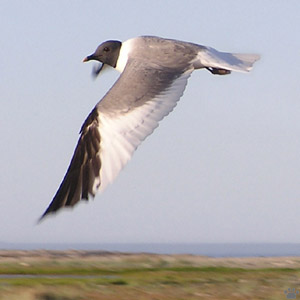
Sabine's gull (Larus sabini), Russkaya Koshka Spit. |
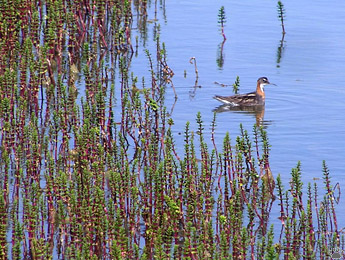
Red-necked phalarope, Belyaka Spit. |
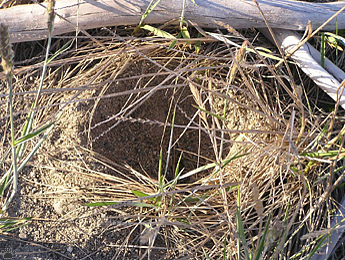
Nest of Sabine's gull, Russkaya Koshka Spit. |

Nest of Arctic tern (Sterna paradisaea), Sbornaya River spit. |
In some places you have to watch your step to avoid stepping on a nest or chick. |
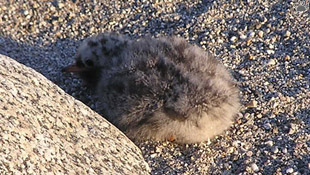
Arctic tern chick, Russkaya Koshka Spit. |
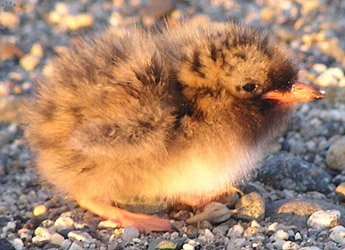 |
 |
| Arctic tern chick, Russkaya Koshka Spit. |
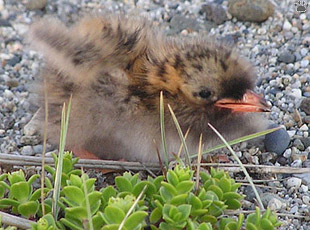
Arctic tern chick, Russkaya Koshka Spit. |
In winter almost all birds leave. Arctic tern fly all the way to Antarctica. Many others winter in SE Asia. |
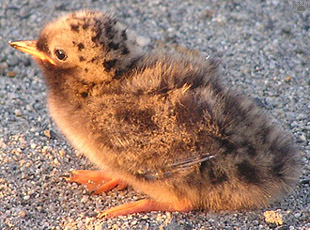
Arctic tern chick, Russkaya Koshka Spit. |
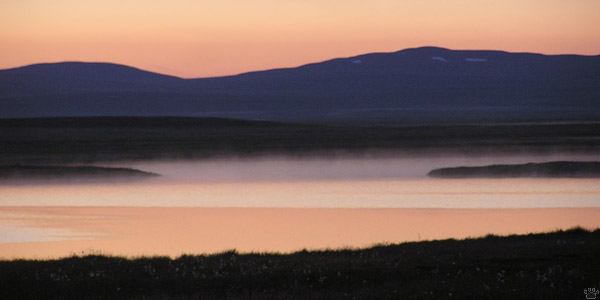
Summer night at Russkaya Koshka Spit, Chukotka. |
Part 4. Coastal spits (continued)
Back to Part 2
Home
|




































